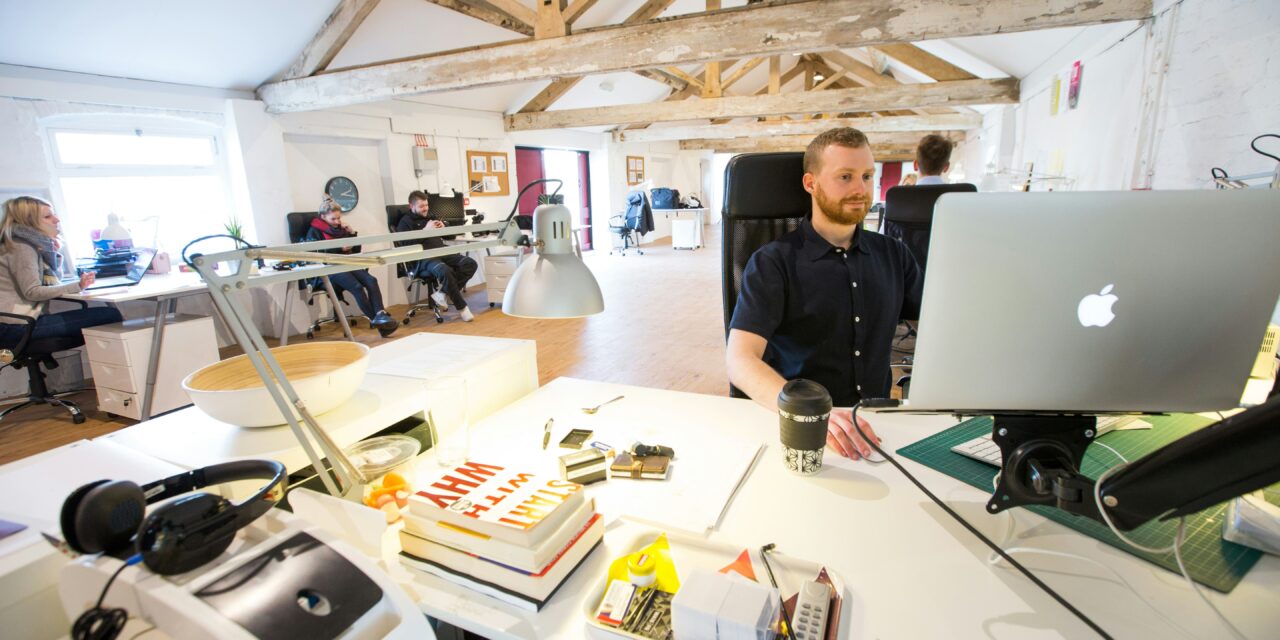After the global pandemic, it became clear that remote work killed the myth that you need a city skyline to build a career. Now, small towns are no longer footnotes in the story of professional success—they’re writing new chapters.
Rural coworking spaces are turning empty buildings into community centers, giving locals and transplants a reason to stay, create, and thrive. The rise of rural coworking isn’t a trend; it’s a quiet revolution that’s reshaping the future of work.
Why Rural Coworking Is Taking Over
The explosion of remote work cracked open possibilities. For decades, cities monopolized opportunities. Talent that grew up in small towns had two options: leave or settle. Today, coworking spaces in rural areas offer a third way—work globally, live locally.
Rural coworking spaces aren’t imitating hybrid coworking giants. They’re designing something far more enduring: a space that fits the character and pace of their towns. These spaces offer more than reliable Wi-Fi and ergonomic chairs; they offer relevance, a sense that staying doesn’t mean settling.
Beyond amenities, the model is being driven by intention. Rural hubs actively create ecosystems that encourage entrepreneurship, collaboration, and professional reinvention. It’s not about hot-desking next to strangers; it’s about knowing your fellow members by name and celebrating their wins.
Importantly, rural coworking isn’t just reactionary. It’s proactive. Local governments, nonprofits, and private investors are seeding these hubs to pull back the brainpower that fled years ago. Some regions are even offering incentives—cash grants, tax breaks, business mentorship—to remote workers willing to make a long-term commitment. Pawnee, Nebraska’s $50,000 offer and Neodesha, Kansas offering an income tax waiver until 2026 are just the tip of the iceberg.
Small Towns Aren’t Sleepy Anymore
The economic domino effect is real. Set up a thriving coworking space, and suddenly the sleepy Main Street isn’t so sleepy anymore. Cafes stay open later. Boutique shops pop up. Local service providers—from web designers to accountants—find new clients. A coworking hub injects oxygen into the system.
This isn’t theoretical. Towns like Lindsborg, Kansas, and Frostburg, Maryland, prove it, both taking efforts to allow local entrepreneurs to network and collaborate without leaving town. In places like this, you’ll see startups that could never have survived without affordable office space, mentorship, and immediate access to creative talent.
Moreover, new residents begin to trickle in, drawn by the combination of affordable living and professional infrastructure. These transplants diversify the economy, bringing new industries, fresh ideas, and a broader tax base. Coworking spaces become both the lure and the anchor, binding newcomers and locals into a shared vision of prosperity.
It’s not about scaling a unicorn startup. It’s about building a livable, sustainable economy one desk at a time—and reversing decades of decline without selling out to big-box solutions that don’t fit small-town DNA.
What Actually Happens Inside These Spaces
Forget the sterile images of people hunched over laptops in glass boxes. Rural coworking hubs are messy, vibrant, human. They aren’t about the architecture; they’re about the collisions.
At any given moment, a local graphic artist might swap marketing tips with a remote SaaS consultant. A freelance web developer might casually design a new site for a farm-to-table restaurant. These connections aren’t forced. They’re the organic result of working in proximity to people who actually want to invest in the local economy.
The best rural spaces blur the line between coworking and community center. They host grant-writing workshops for local nonprofits. In particular, these workshops often extend beyond tech and entrepreneurship, offering essentials like navigating legal documentation for startups, nonprofits, and freelancers launching their first ventures.
Coworking managers in these environments are more than landlords. They’re ecosystem builders. They recognize talent, foster connections, and set the tone that ambition is welcome here, but so is vulnerability, risk-taking, and failing forward. As a result, these new spaces are where professional lives and personal lives intertwine, and where ambition is met with encouragement, not competition.

Challenges Nobody Wants to Talk About
Rural coworking sounds romantic until reality checks in. Small towns can’t always guarantee the headcount needed to fund fancy spaces. High-speed internet? Forget about it, as it’s still a dream in too many zip codes. And cultural resistance is real: “Why pay to work outside the house?” is a question that doesn’t vanish overnight.
Likewise, operators who succeed think differently. They know that a rural coworking hub isn’t just a business—it’s a movement. Membership fees alone won’t pay the bills, since successful hubs layer in event hosting, educational programs, consulting services, and sometimes even remote mail services or micro-retail to diversify revenue streams.
Infrastructure challenges also require creative partnerships. Some hubs work directly with local governments and telecom providers to bring broadband into town, not just for their own members, but for the entire community. They lobby for grants, negotiate service expansions, and sometimes even manage small-scale fiber projects themselves.
And when cultural skepticism creeps in? Smart operators lean hard into storytelling. They showcase member successes, community impacts, and real economic wins. They embed themselves into the social fabric—sponsoring parades, hosting open houses, supporting school programs—until “coworking” is seen not as a threat, but as a badge of pride.
The Next Phase: Owning the Narrative
Rural coworking isn’t just about keeping remote workers comfortable. It’s about building new economic identities from the ground up.
In the next five years, expect the most successful rural coworking spaces to move beyond simple desk rental. They’ll become accelerators for rural entrepreneurship, offering mentorship, venture capital introductions, and tech education programs. They’ll blur the lines between coworking, economic development offices, and small business incubators.
Some will partner with universities to create training pipelines that keep young talent local. Others will launch community investment funds that allow locals to buy into the very businesses that are rebuilding their towns. Broadband infrastructure won’t be an obstacle—it’ll be a bargaining chip, with coworking spaces leading the charge for universal access.
Most importantly, these hubs will redefine what professional success looks like. It won’t require uprooting. It won’t demand sacrifice. Success will look like a thriving business next door to your kids’ school, down the street from the diner where everybody knows your name. The towns that embrace this vision first will not just survive—they will lead.
Conclusion
Rural coworking spaces aren’t just patching over the cracks—they’re reengineering what success looks like outside city limits. Talent no longer needs a skyline; it needs a launchpad.
And that’s exactly what these small towns are building. The communities that bet early on coworking will survive all the turbulence in the real estate market and emerge as proper community centers, instead of being mere office space renters.









